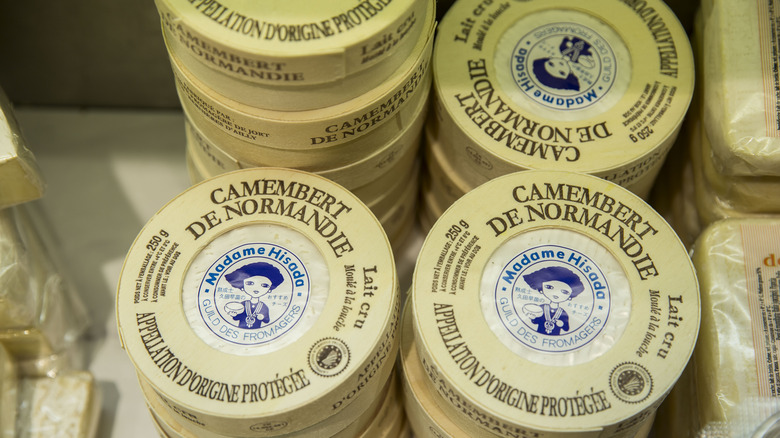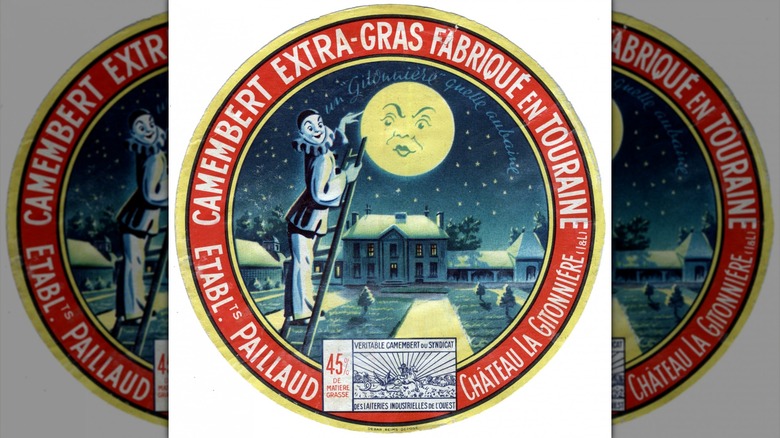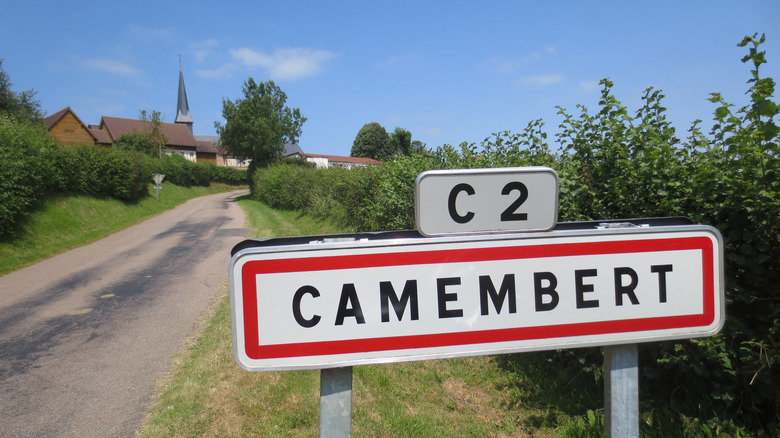The Fascinating French Hobby Of Cheese Label Collecting
We may receive a commission on purchases made from links.
Food lovers collect all kinds of memorabilia, from beer steins to cookbooks, cookie cutters to tea towels. Some collectibles, such as the toys from the recent adult Happy Meals, can even command prices into the tens of thousands of dollars. One of the most esoteric groups of collectors, however, has to be tyrosemiophiles, aka people who collect labels from French Camembert cheeses (per Oxford Reference).
A bit like stamps or concert posters, camembert labels are little individual works of art, which make them eminently collectable. They started appearing on the wooden cheese boxes packaging the soft, white cheese from the Normandy region of France around the late 1800s (per Oxford Reference). And as with baseball cards, they were originally meant to appeal to children with the hopes that they would save them. Not only did the marketing technique work, but it also spawned a niche hobby that was officially recognized around 1914 in the Bulletin de Vieux Papier, according to Atlas Obscura.
There's even an official club, Club Tyrosemiophile de France (CTF), which was established in 1960. Headquartered at the Camembert Museum in Vimoutiers, Normandy, the club puts on events where collectors can trade labels and stories with like-minded label-heads and also offers labels from their extensive catalog for sale.
Why camembert?
It's no secret that France produces a huge variety of cheese. In fact, Cheese Connoisseur estimates that there are more than 1,600 different cheeses produced in France, which is pretty impressive, given that the country is about the same size as Texas. So what's so special about camembert labels? Part of the lure is the sheer variety of images and cultural touchstones the camembert labels capture. If you take a spin through the CTF gallery, you'll see labels with everything from country milkmaids hoisting buckets to ancestral castles, crests, and coats of arms — and, naturally, lots of cows and goats. Other labels depict cinematic figures such as King Kong, or fantasy scenes, such as a wizard peering through a telescope into the night sky.
Another aspect of intrigue is French allegiance to the cheese itself. Serge Schéhadé, an avid collector and president of CTF, told Atlas Obscura that the national taste for the soft-ripened circles took off during World War I, when French dairies donated their cheeses to the soldiers' rations, winning over thousands of hearts and minds (and palates).
Most importantly, each label has an artist and a story to tell. Oxford Reference describes them as "... a fascinating study of twentieth-century world history, national (and local) French pride, popular culture, changing social mores, and the enduring power of myths and fairy tales." (And they just look cool.)
Get collecting
Looking for an obscure hobby to try? Tyrosemiophilia is not only fun, but it's also a good excuse to book a trip to France. You don't have to travel, however, to get started. Start first with Ebay or Etsy, where you can often find labels for only a couple of dollars. You can also bend the ear of your local cheesemonger to find out when new cheeses and labels arrive in the shop.
Once you get bitten by the collecting bug, join the Club Tyrosemiophile de France, which would love to have you. The club boasted around 2,000 members in the 1980s, but lately, there are only a few hundred members, according to Atlas Obscura. From there, you can connect with established collectors and see their albums and galleries — some dedicated fans have amassed thousands of labels over the years.
When you're ready to graduate into serious collecting, the logical last step is going to the source to do a little in-person label sleuthing. While you can definitely get some cool and interesting labels in the United States and Canada, French imports are in shorter supply due to laws preventing raw milk cheese imports unless they have been aged for 60 days (per Cornell University) — a little lengthy for a cheese with a short shelf life. For limited-edition labels, go to the source — and taste lots of cheese — by planning a cheese tour of Normandy.


